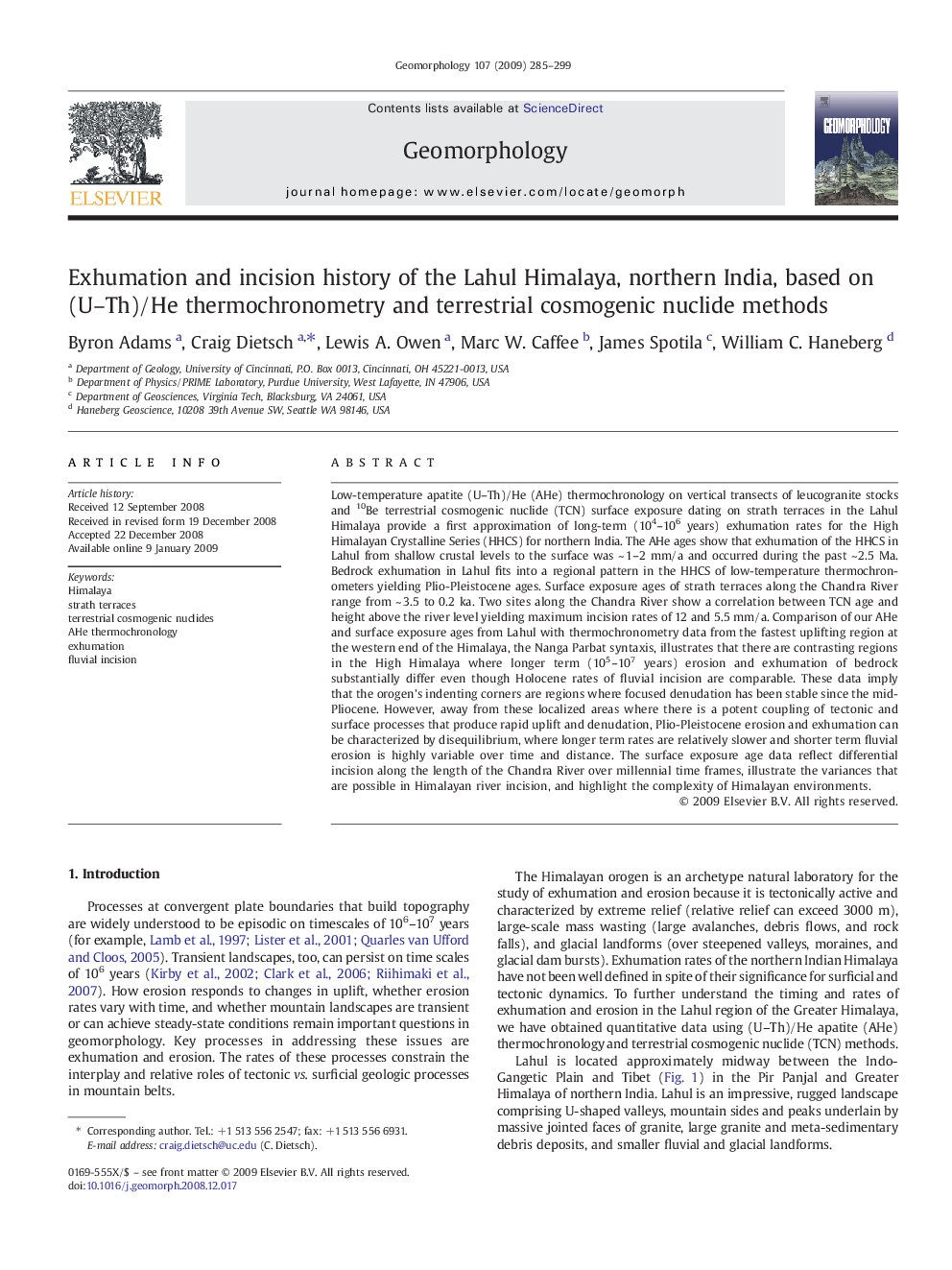| کد مقاله | کد نشریه | سال انتشار | مقاله انگلیسی | نسخه تمام متن |
|---|---|---|---|---|
| 4686406 | 1635543 | 2009 | 15 صفحه PDF | دانلود رایگان |

Low-temperature apatite (U–Th)/He (AHe) thermochronology on vertical transects of leucogranite stocks and 10Be terrestrial cosmogenic nuclide (TCN) surface exposure dating on strath terraces in the Lahul Himalaya provide a first approximation of long-term (104–106 years) exhumation rates for the High Himalayan Crystalline Series (HHCS) for northern India. The AHe ages show that exhumation of the HHCS in Lahul from shallow crustal levels to the surface was ~ 1–2 mm/a and occurred during the past ~ 2.5 Ma. Bedrock exhumation in Lahul fits into a regional pattern in the HHCS of low-temperature thermochronometers yielding Plio-Pleistocene ages. Surface exposure ages of strath terraces along the Chandra River range from ~ 3.5 to 0.2 ka. Two sites along the Chandra River show a correlation between TCN age and height above the river level yielding maximum incision rates of 12 and 5.5 mm/a. Comparison of our AHe and surface exposure ages from Lahul with thermochronometry data from the fastest uplifting region at the western end of the Himalaya, the Nanga Parbat syntaxis, illustrates that there are contrasting regions in the High Himalaya where longer term (105–107 years) erosion and exhumation of bedrock substantially differ even though Holocene rates of fluvial incision are comparable. These data imply that the orogen's indenting corners are regions where focused denudation has been stable since the mid-Pliocene. However, away from these localized areas where there is a potent coupling of tectonic and surface processes that produce rapid uplift and denudation, Plio-Pleistocene erosion and exhumation can be characterized by disequilibrium, where longer term rates are relatively slower and shorter term fluvial erosion is highly variable over time and distance. The surface exposure age data reflect differential incision along the length of the Chandra River over millennial time frames, illustrate the variances that are possible in Himalayan river incision, and highlight the complexity of Himalayan environments.
Journal: Geomorphology - Volume 107, Issues 3–4, 15 June 2009, Pages 285–299